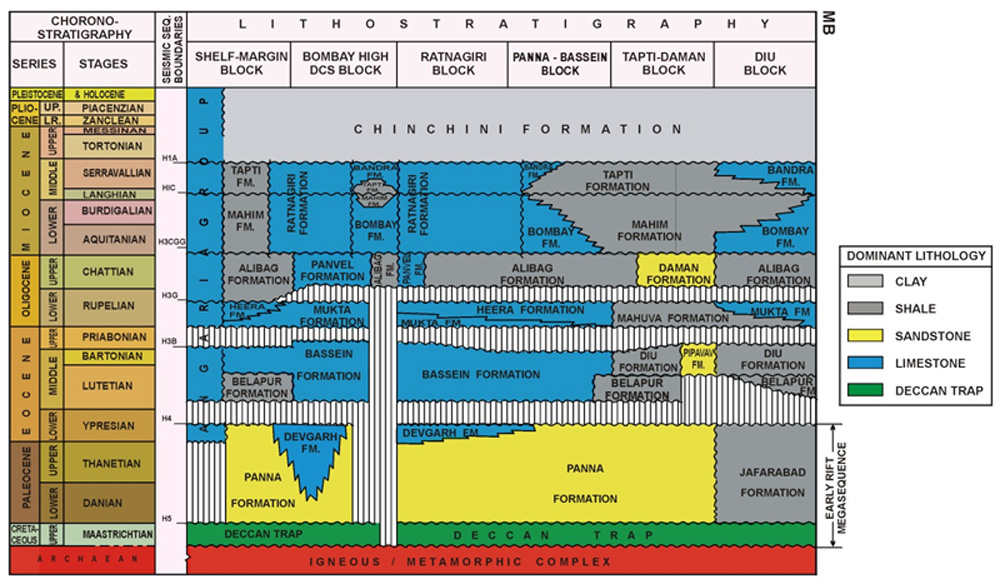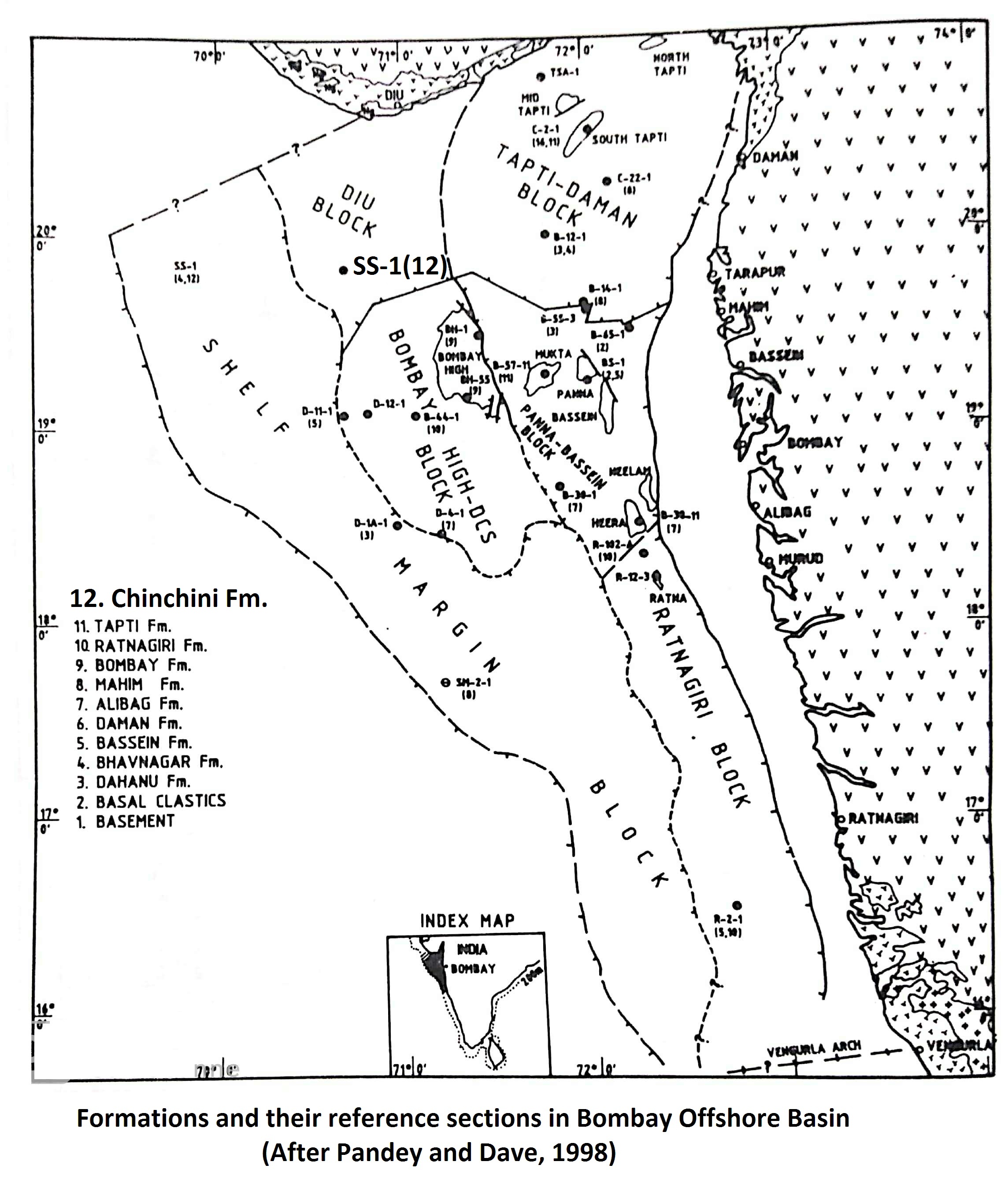Daman Fm
Type Locality and Naming
Well C – 2 – 1, (depth interval 1750 – 2120 m). [Original Publication: Basu, D.N., Banerjee, A and Tamhane, D.M. 1982. Facies distribution and petroleum geology of Bombay Offshore Basin, India. Journal Petroleum Geology, Volume 5, pp. 57-75.]
[Figure: Lithostratigraphy in Mumbai Offshore blocks (from NDRDGH.gov.in; after Jitendra Misra, 2009)]
Lithology and Thickness
Clayey sandstone. In the type section, the formation is represented by a sandstone-shale alteration. The shale is grey to dark grey, fissile, splintery, occasionally silty and carbonaceous. A few coal lenticles and rounded spherulite bodies are also observed.
In the type section, the formation is 370 m thick. Maximum thickness of this formation has been mapped around the South Tapti structure.
[Figure 1: Formations and their reference sections in Mumbai Offshore Basin (after Pandey and Dave, 1998)]
Relationships and Distribution
Lower contact
The Daman Formation is unconformably underlain by the Mahuva Fm.
Upper contact
It is unconformably overlain by the Mahim Fm.
Regional extent
GeoJSON
Fossils
The formation is poorly fossiliferous.]
Age
Depositional setting
Varies from fluvial with tidal influence in the northern part, to tidal flat and near shore conditions in the central part of Tapti-Daman block (Peters, 1981). During this period, Surat Depression experienced the maximum subsidence-accumulating thick under compacted claystone relating to the prograding delta from northeast.
Additional Information

